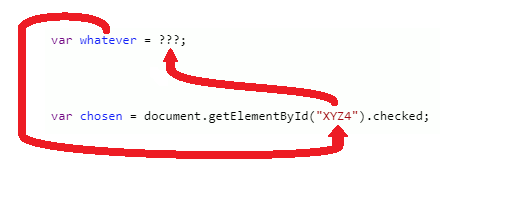-
Posts
15,292 -
Joined
-
Last visited
-
Days Won
436
Everything posted by requinix
-
It probably doesn't work because your "button" is actually a link. But I don't actually know what "output" you're trying to get...
-
Well, you could do it... you know... recursively. As in you do one query to find the next step's relations, then another query for the next, and another for the next, until you've gone as far as you want (or you run out of relations). Remember not to check IDs you've already seen before. Depending on your database server, you may be able to write a recursive SQL query using CTEs...
-
Don't use the version from FlatPak: it's unofficial and apparently buggy. Install VS Code from an official source.
-
Keep track of the previous row. When the current row's year (or whatever you want to measure by) changes then you stick an ID on the table row.
-
Probably? It's a package manager. See if you have it installed, and if so if it thinks VS Code was installed through it.
-
Did you install the "FlatPak" version of VS Code?
-

group multiple inputs with the same ID into a single row in html
requinix replied to sashavalentina's topic in MySQL Help
You need to stop saying "group by" and start describing what you want to do. -

group multiple inputs with the same ID into a single row in html
requinix replied to sashavalentina's topic in MySQL Help
That does not help to explain why you're doing this. I'm asking because this query INSERT INTO invoice_price (order_id) SELECT order_id FROM ordered_items GROUP BY order_id WHERE order_id = '$order_id' doesn't make any sense: you take the $order_id that you already know, search for it in the ordered_items table, and then insert those results into invoice_price? Why aren't you inserting the $order_id value directly just like you did with ordered_items? -

How should importing classes be used when using traits?
requinix replied to NotionCommotion's topic in PHP Coding Help
There could also be a bug with annotation support. It really should not be that inconsistent - unless there's some kind of technical limitation. Probably. -

group multiple inputs with the same ID into a single row in html
requinix replied to sashavalentina's topic in MySQL Help
Explain what that means. "Group" how? -

How should importing classes be used when using traits?
requinix replied to NotionCommotion's topic in PHP Coding Help
PHP does not parse /** */ docblocks. That's Doctrine/Symfony (I forget which one technically does the annotation support). But code doesn't behave randomly so there must be some difference between the situation that works and the one that does not. Either way, the answer is the same: don't import stuff you don't need, do import stuff you do need. -

How should importing classes be used when using traits?
requinix replied to NotionCommotion's topic in PHP Coding Help
Are you saying that in one situation, having the imports in the trait file and not the class file works, but in another situation the same arrangement does not work? -

roman numerals to decimal conversion question
requinix replied to jodunno's topic in PHP Coding Help
In general, if you have problems with code not doing what you want, posting said code is probably a good first step. There are multiple ways of enforcing the digit rules so knowing what your current code is will help identify what approach will work best. -
-
Back to your original posted question, Still getting the impression that you posted a couple snippets of code. What's the complete source?
-
Editor is a bit buggy with multiple toolbar rows, but I think I got it.
-
Fixed. y'all are weird for posting code from a phone but whatever
-
Well, there has to be some code somewhere that is not working as expected, because once that "result" makes it to "dee" and getElementById, it no longer works. Stop posting descriptions of your code and post your actual code. 600+ posts now. You should know this. Upon discussion with myself, management has decided to address this by pointing out to the user that they should be using the Code <> button when posting code instead of the Quote " button. Again, 600+ posts.
-
Tried a PNG with transparency?
-
Please post the code you actually have that is currently working.






